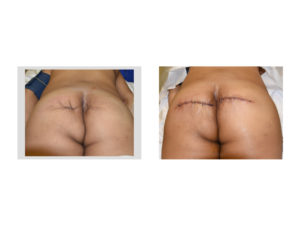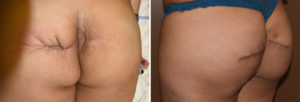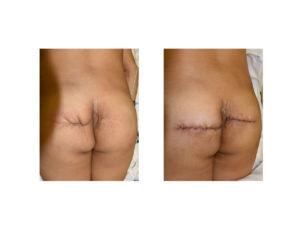Background: Fat grafting to the buttocks is most commonly done for aesthetic reasons as in the well known Brazilian Butt Lift (BBL) procedure. Large numbers of patients treated around the world has shown that it can be very successful with relatively high amounts of fat retention in many patients. Less is well known, however, about fat grafting into the deformed or scarred buttocks for reconstructive purposes. (although a lot is known about fat grafting in breast reconstruction)
The most common use for fat grafting in buttock reconstruction is in the management of illicit silicone oil injections. While the injected silicone material can never really be removed the purpose of the fat injections to break up the scar contractures and introduce healthier tissue amongst them. Its effects are not really for volume augmentation per se. But injectable fat grafting is still effective for these purposes.
The rare condition of cojoined twins (one in 200,000 births) is a congenital condition that may require secondary buttock reconstruction. One type of cojoined twins is pygopagus (iliopagus) where they are joined back to back at the buttocks. This is reported to occur in about 20% of cojoined twin cases. Their separation ends up creating buttock scars and contour deformities as would be expected that awaits secondary reconstruction.
Case Study: This 26 year-old female presented with buttock scar contractures from having been separated at birth from her twin. Both buttocks had significant indentations, wide scarring and very visible suture track marks.


While injectable fat grafting is most commonly used in the buttocks, scar contractures present different challenges. Wide scars and severe indentations may be better served by excision and deep scar release. This creates an open defect into which the need for traditional dermal-fat grafting must be used to create volumetric fill. These larger dermal-fat grafts take well in my experience.
Highlights:
1) Buttock contour deformities due to scarring can be effectively treated by fat grafting.
2) Injectable fat grafting to a deformed buttocks may require more than one injection session to optimize the buttock shape.
3) Dermal-fat grafting to the buttocks allows for scar revision and release at the same time but also requires a donor site harvest and scar.
Dr. Barry Eppley
Indianapolis, Indiana




